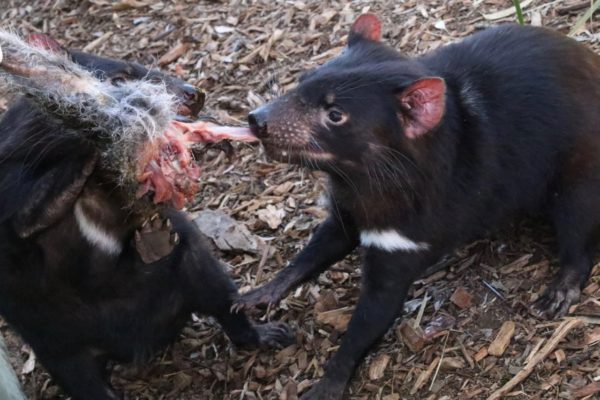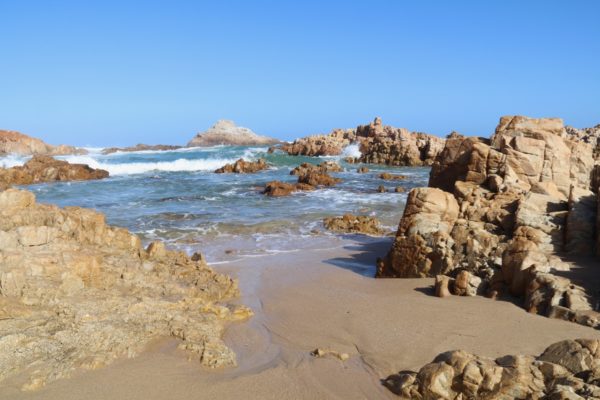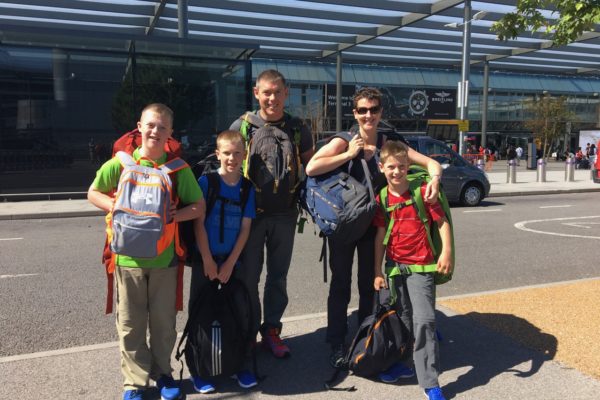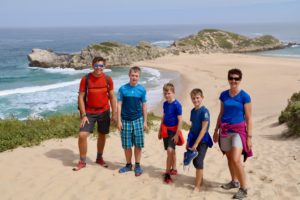Fraser Island, off Australia’s eastern Queensland coast, is the world’s largest sand island, stretching over 120km. Fraser Island’s World Heritage listing ranks it with Australia’s Uluru, Kakadu and the Great Barrier Reef. It is a place of exceptional beauty, with its long uninterrupted white beaches flanked by strikingly coloured sand cliffs, and over 100 freshwater lakes, all ringed by white sandy beaches. Ancient rainforests grow in sand along the banks of fast-flowing, crystal-clear creeks. The highest dunes on the island reach up to 240 metres above sea level.
We experienced a three day, two night camping trip to Fraser Island, organised by Fraser Magic 4WD.
On a damp morning we were up early to collect our 4WD and camping supplies. The 6.30am video briefing, mandatory for anyone driving on the island, was a helpful refresher on sand driving and also gave some useful tips about being safe around dingoes. The car we had been assigned was a Discovery 2. However with all the camping gear in the boot there was very little space for food and clothes for a family of five. At the last minute we switched to a Land Rover 110. This provided more space but is also more “old school” than the Discovery 2, which in itself is reaching vintage status.
At 8.30am we were on the ferry and on our way to Fraser Island. There was great excitement in our Land Rover 110.
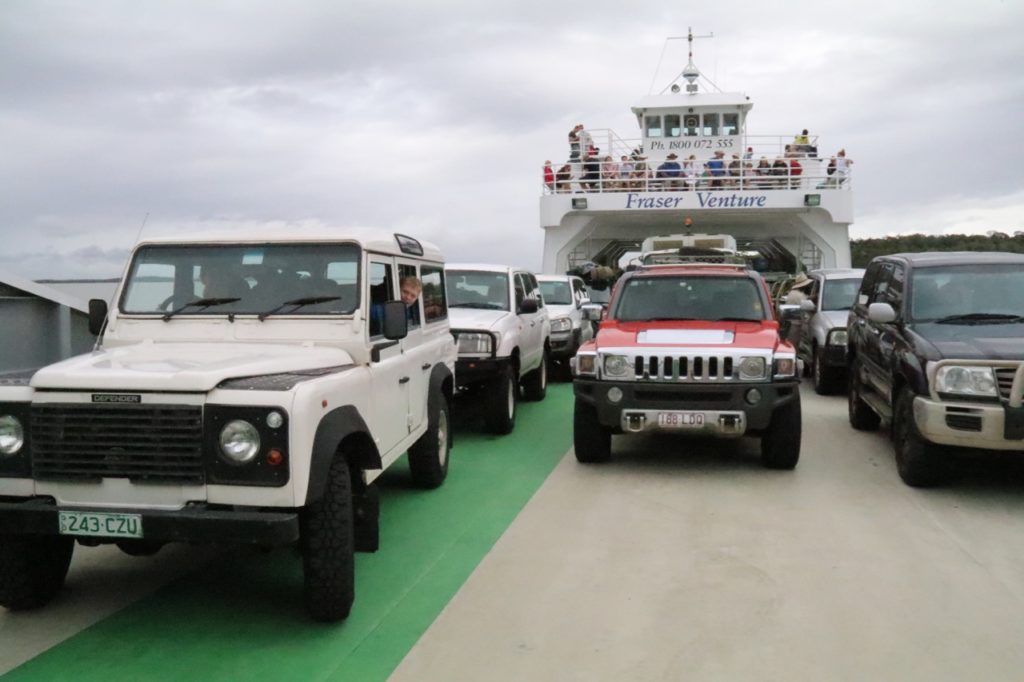
As soon as you arrive at the island you are driving on sand and dirt tracks.
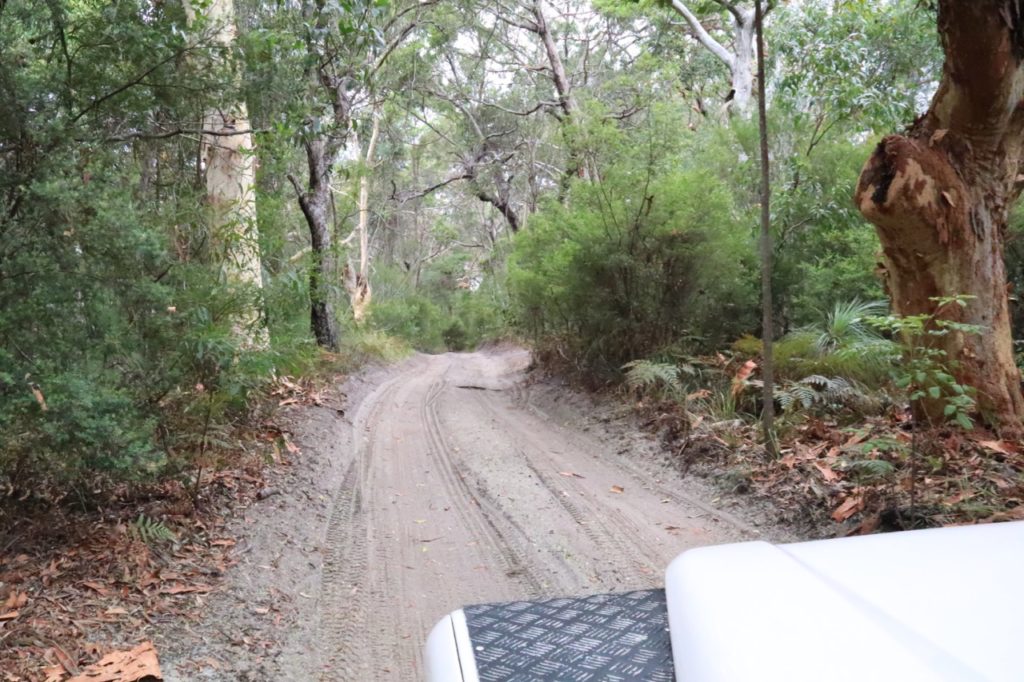
The drive across the island takes about an hour but we decided to head for Lake McKenzie which is right in the middle of the island. Lake McKenzie is an inland freshwater lake surrounded by white sand, perfect for a refreshing dip. Here we saw our first dingoes. It is a beautiful spot but can get busy as many tour groups visit here as part of their island day trip.
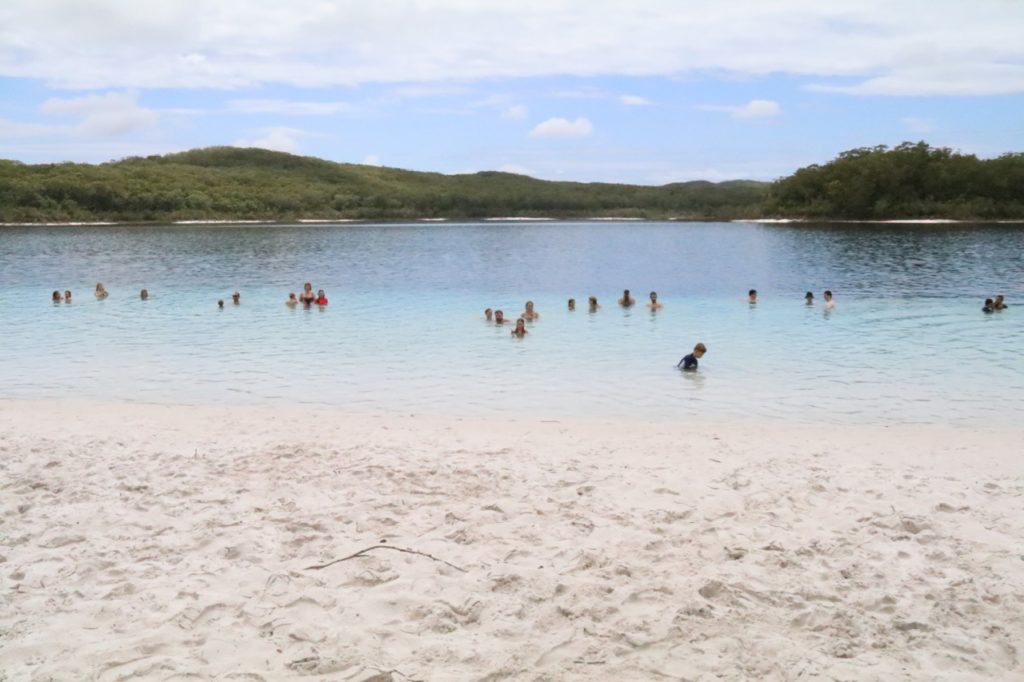
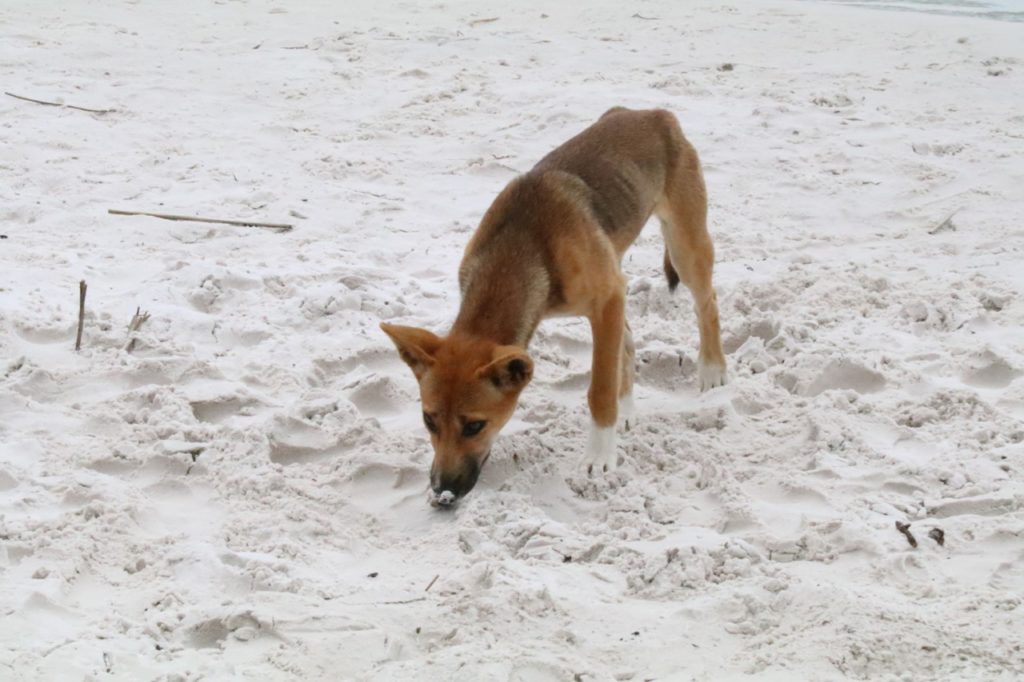
From here we continued on across the island heading for the east coast beach. We took an adventurous inland track involving a very bumpy sandy track which took a great deal of concentration from Dave as our driver.
Once we hit the east coast beach we had about an hours drive along the beach heading for our campsite at Dundubara. We had chosen a fenced campsite for our two nights on the island due to the very real threat of dingoes. Dingoes have become more of a problem as they have greater interactions with humans. Driving along the beach with the sea on one side and the wind streaming in through open windows was a first for the boys.
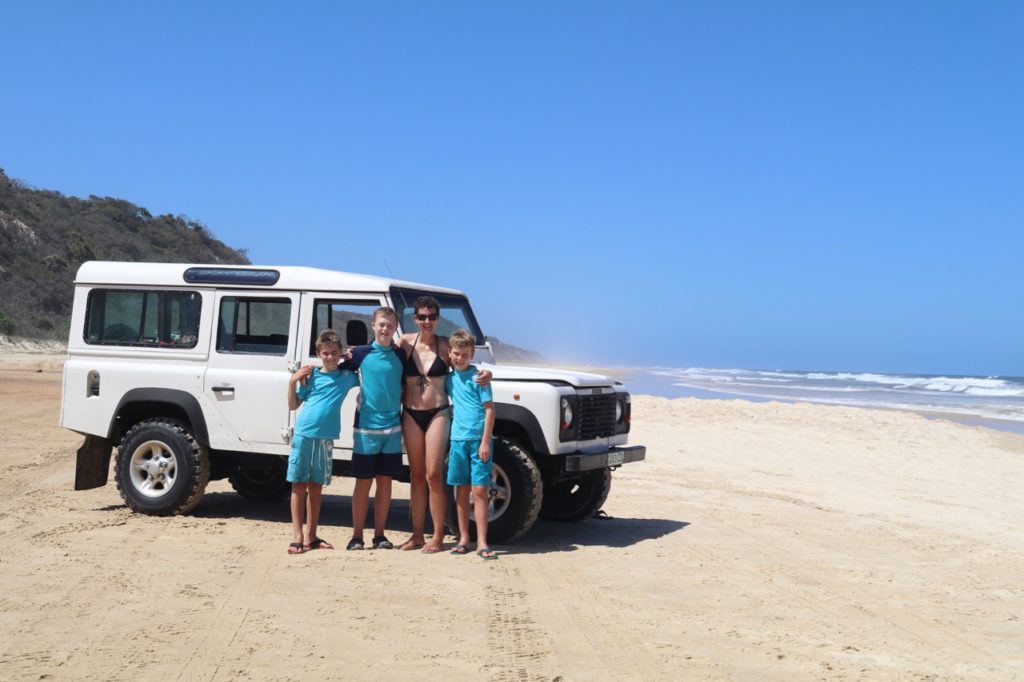
Arriving at Dundubara Campsite mid-afternoon we set about putting up our tents and organising our campsite. This was the boys first camping experience and they enthusiastically helped put up the tents. We had two tents, camp mats, sleeping bags, a stove, pots and pans, plates and cutlery and a tonne of food. The camping gear supplied by Fraser Magic 4WD was in very good condition and it was helpful to have little things included like matches, washing up liquid, and toilet roll.
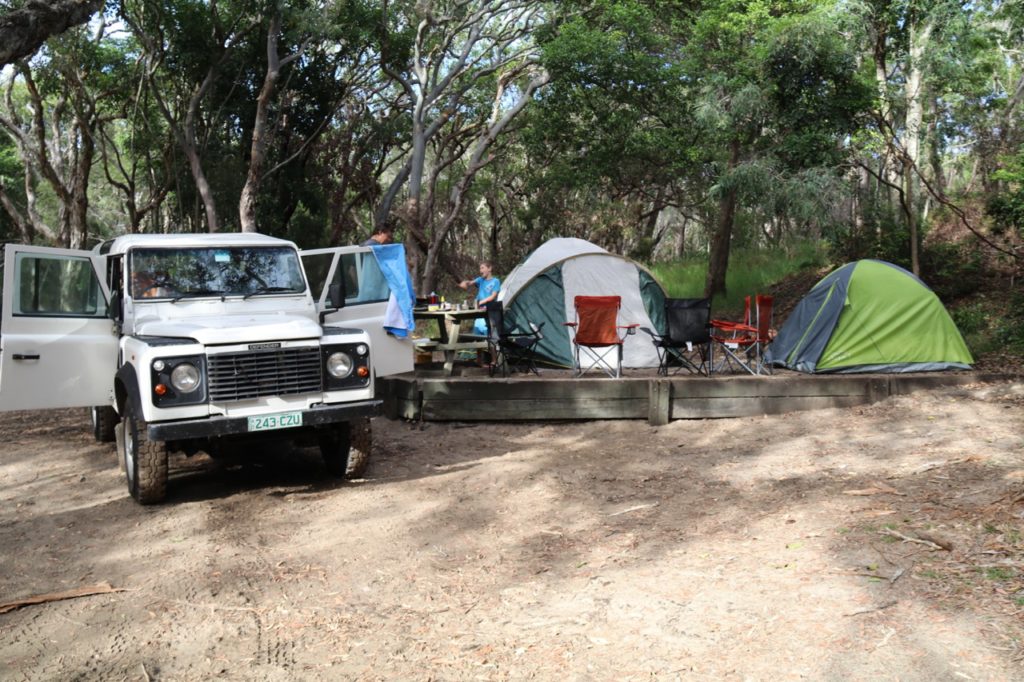
Dinner tonight was a BBQ but unfortunately the weather was drizzly and damp so it was a rushed affair. We settled into our tents for the night.
The next morning we were up early. Camping means early to bed and early to rise. It was a beautiful sunny day. After a hearty breakfast of cereals, toast, cup a soup and chocolate bananas we were off for the day. We headed north along Seventy Five Mile Beach to the Champagne Pools. Best visited at high tide, when the surf is rolling in over the rocks and into the pools. The surf and spray leaves bubbles in the pools just like champagne! Our family loved it and spent a good hour being sprayed by the surf. The views from here of the coastline of Fraser Island are spectacular.
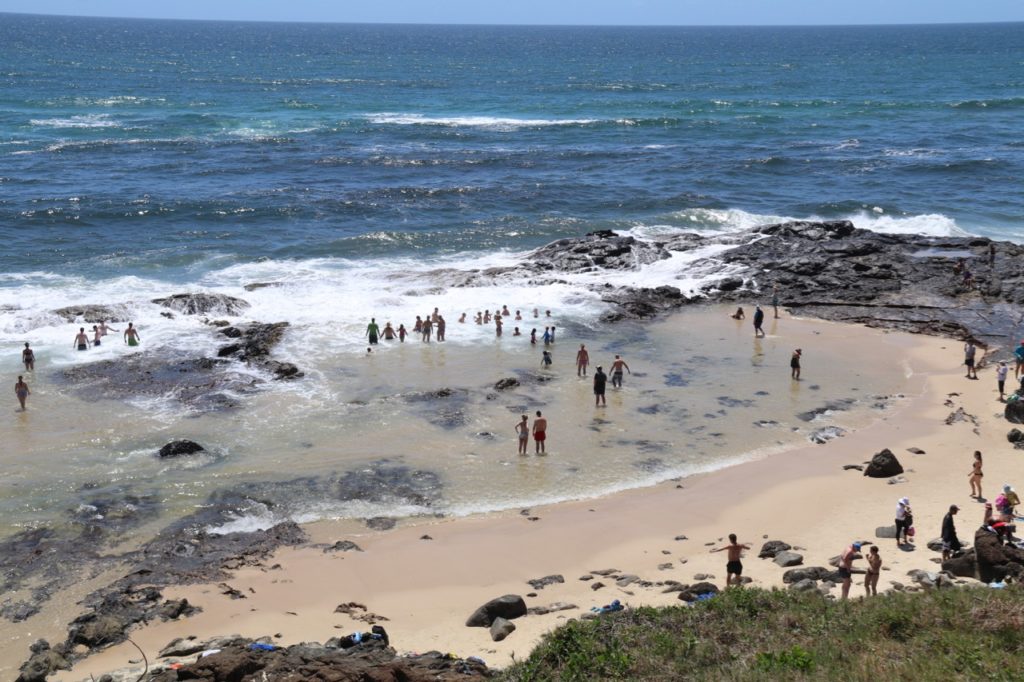
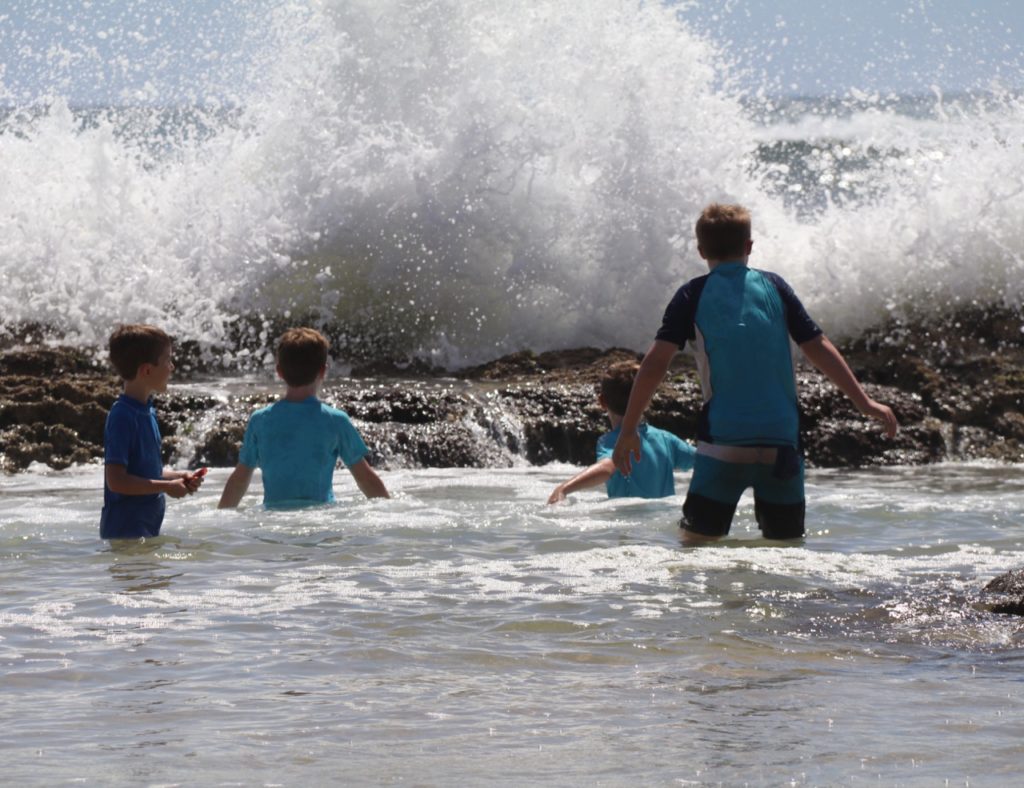
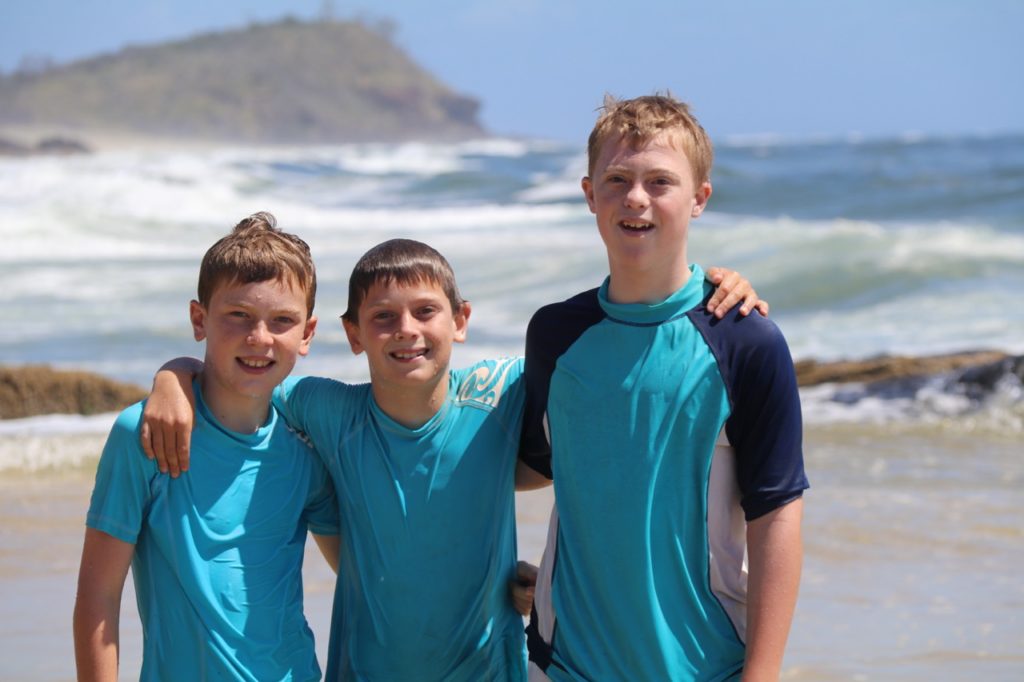
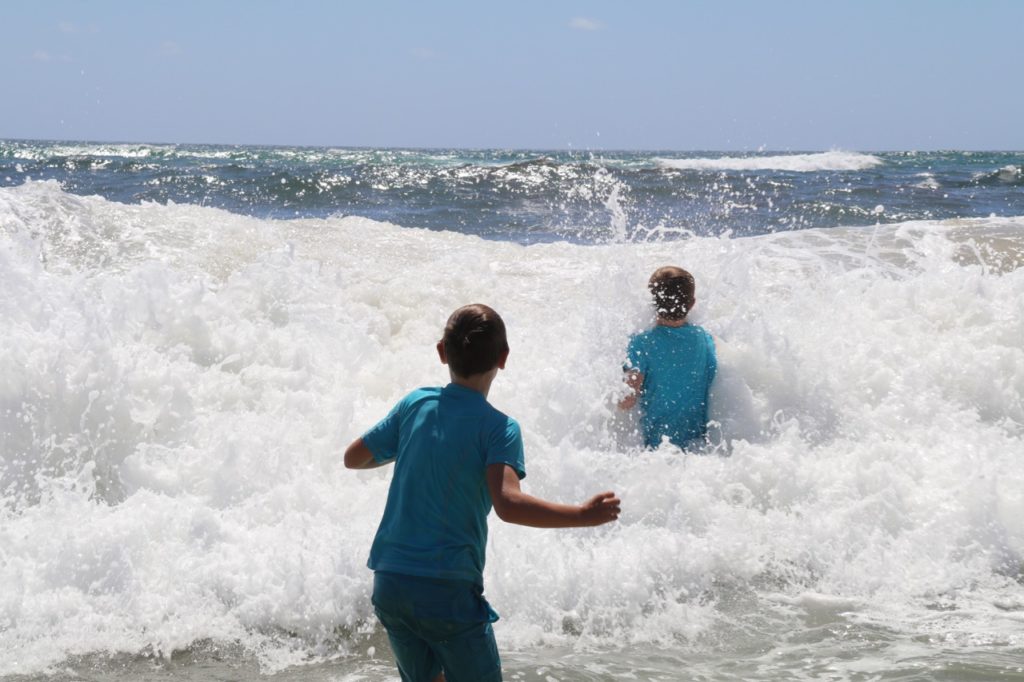
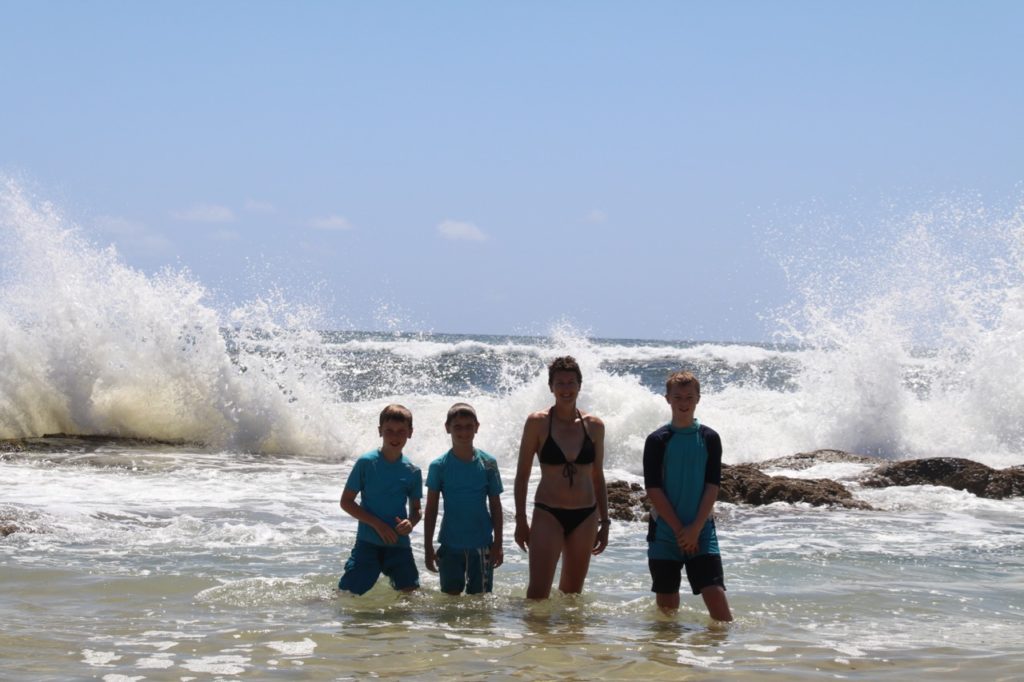
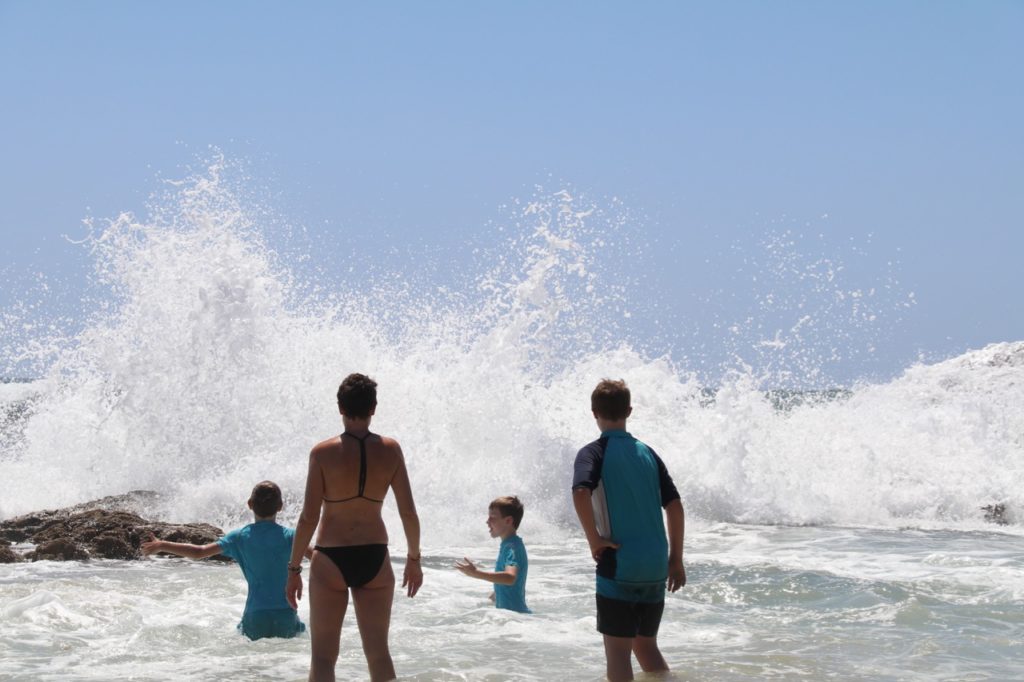
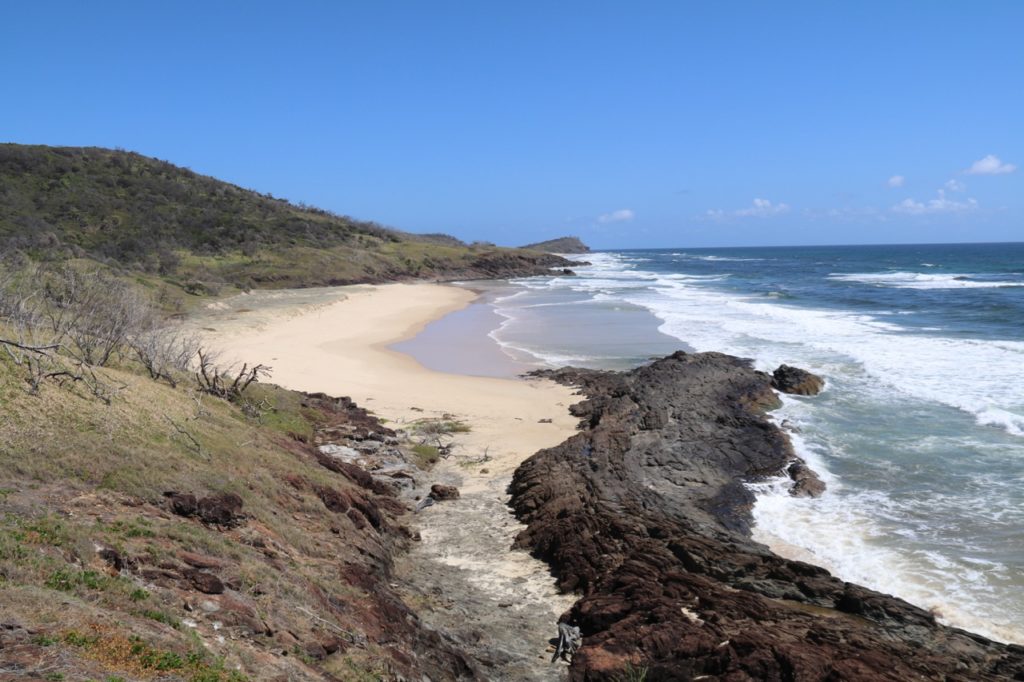
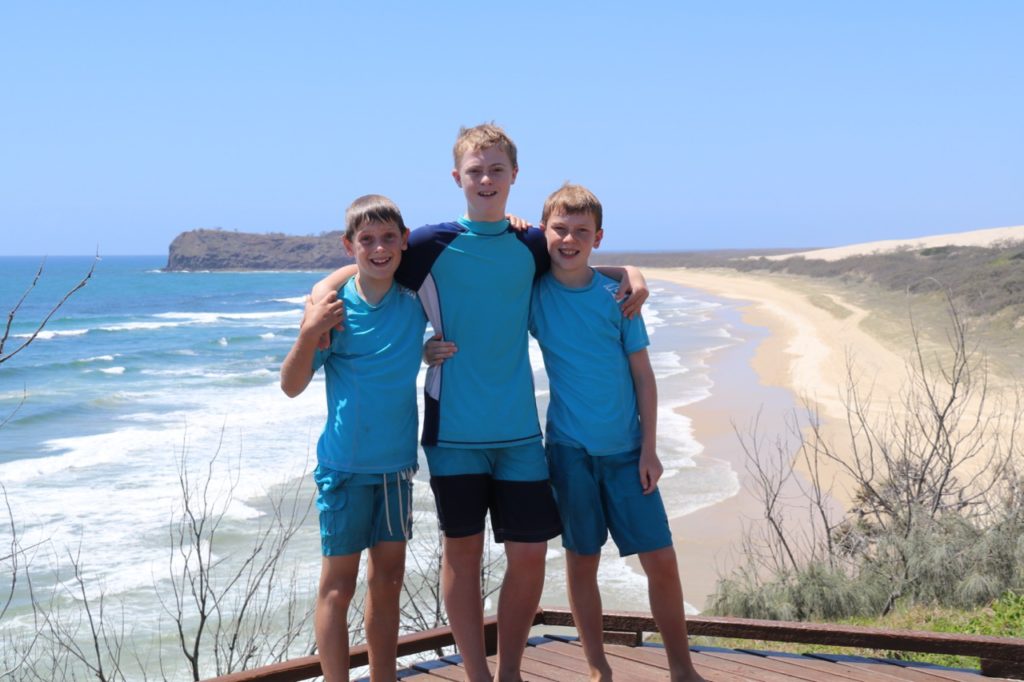
From here we travelled back down the beach finding a picnic spot for lunch. We sat on the beach with nobody else in sight. We are so lucky to be having these experiences.
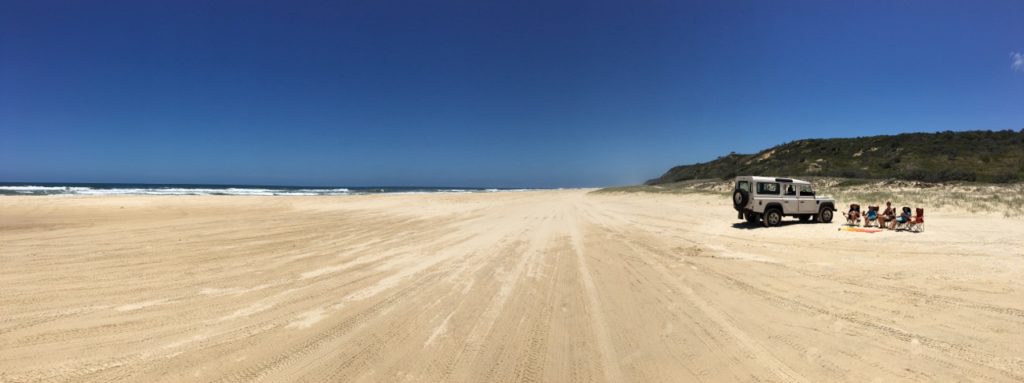
After a splendid picnic lunch we drove along the beach to the Maheno Wreck, a trans-Tasman liner driven ashore by a cyclone in 1935. Today the hull lies slowly deteriorating in the harsh salt environment.
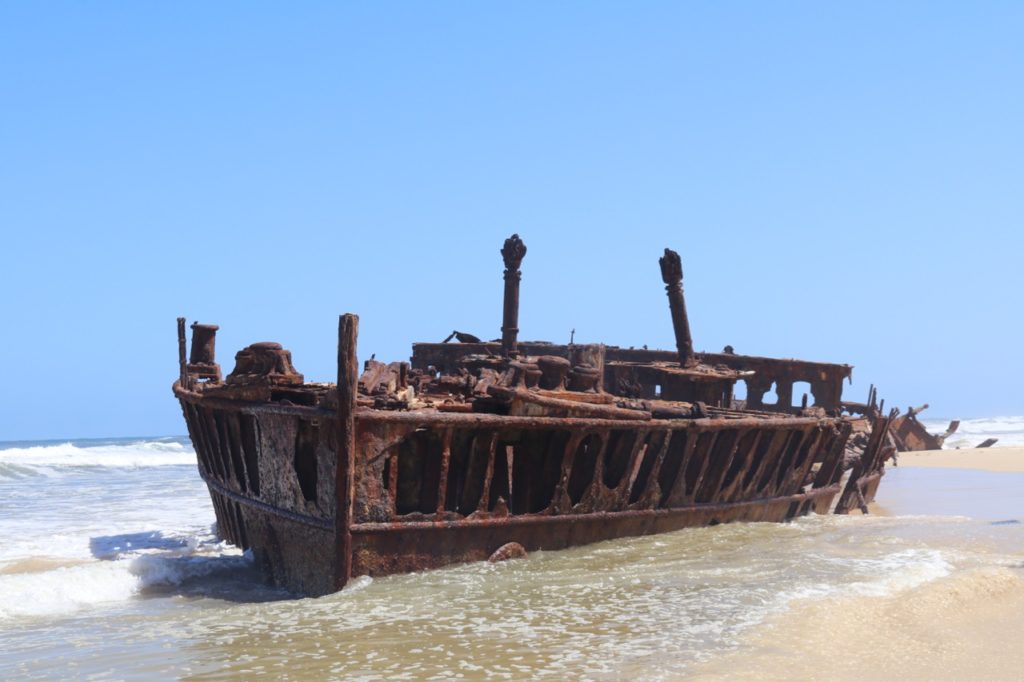
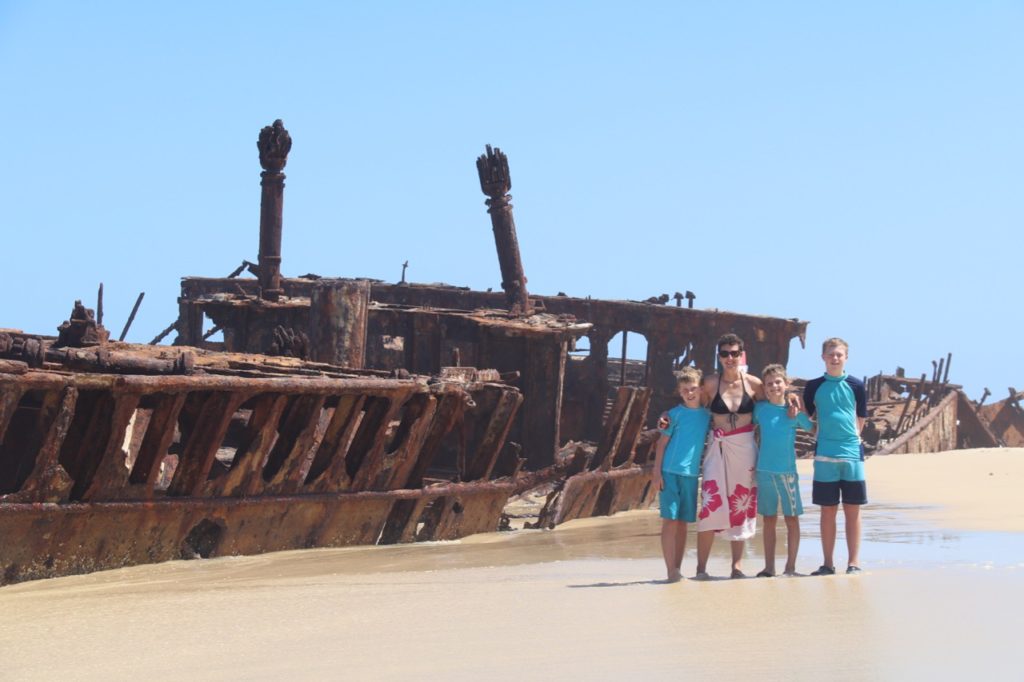
From here, we moved on to Eli Creek, the largest freshwater creek on the east coast. This is a great spot for kids as they can play safely in the creek. Alternatively they can float down it on rubber rings or air beds. Our children joined with many Australian children playing a variety of games in the creek. We spent several hours here whilst they played. This is a perfect spot to picnic.
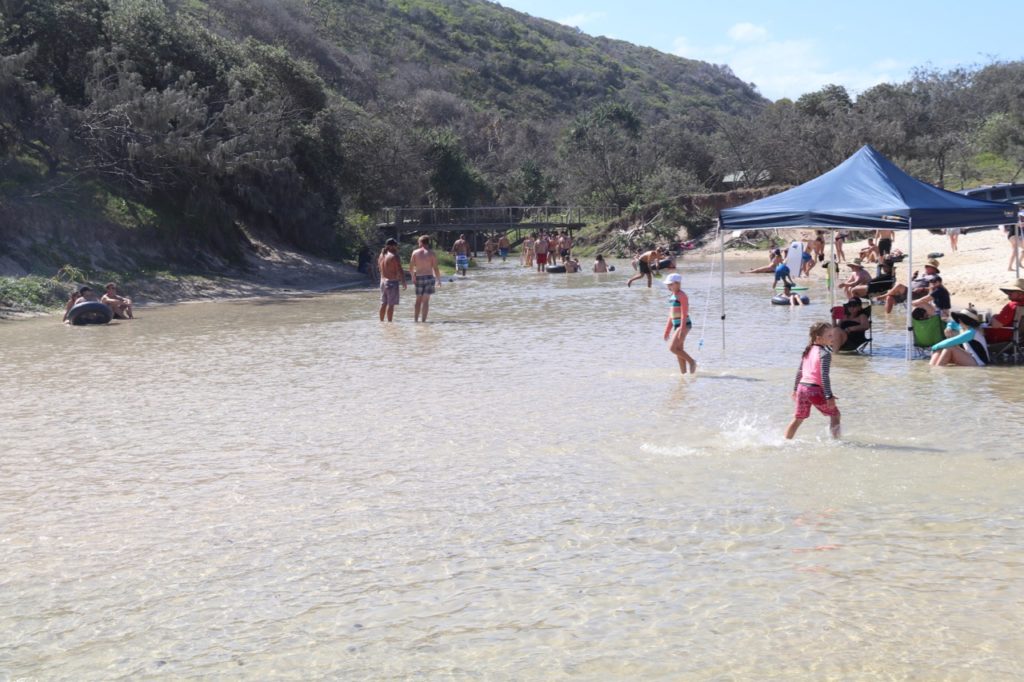
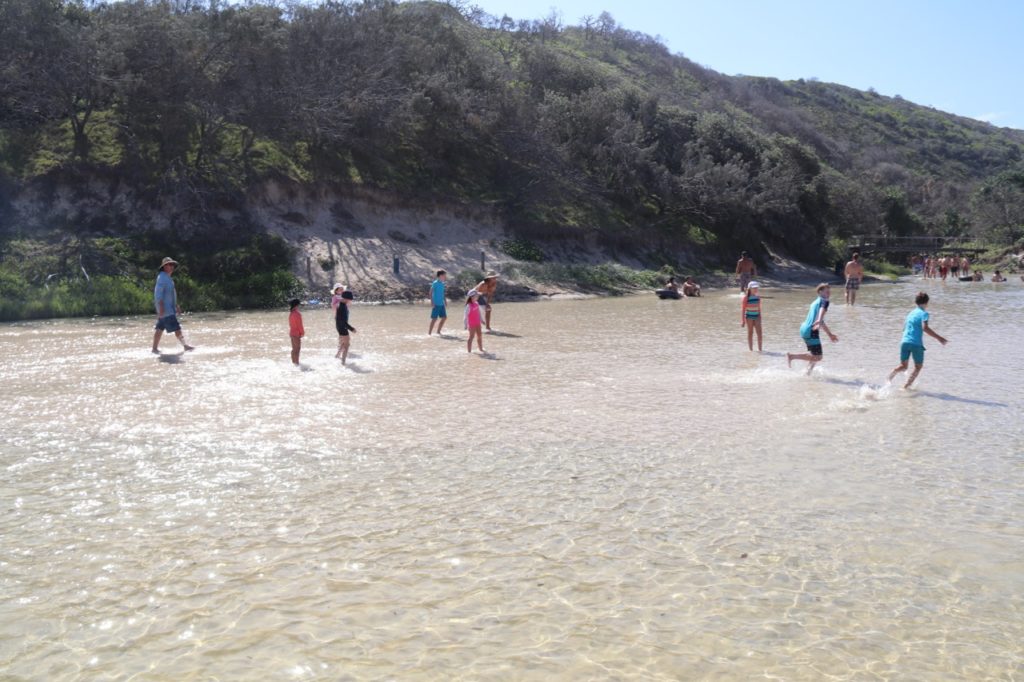
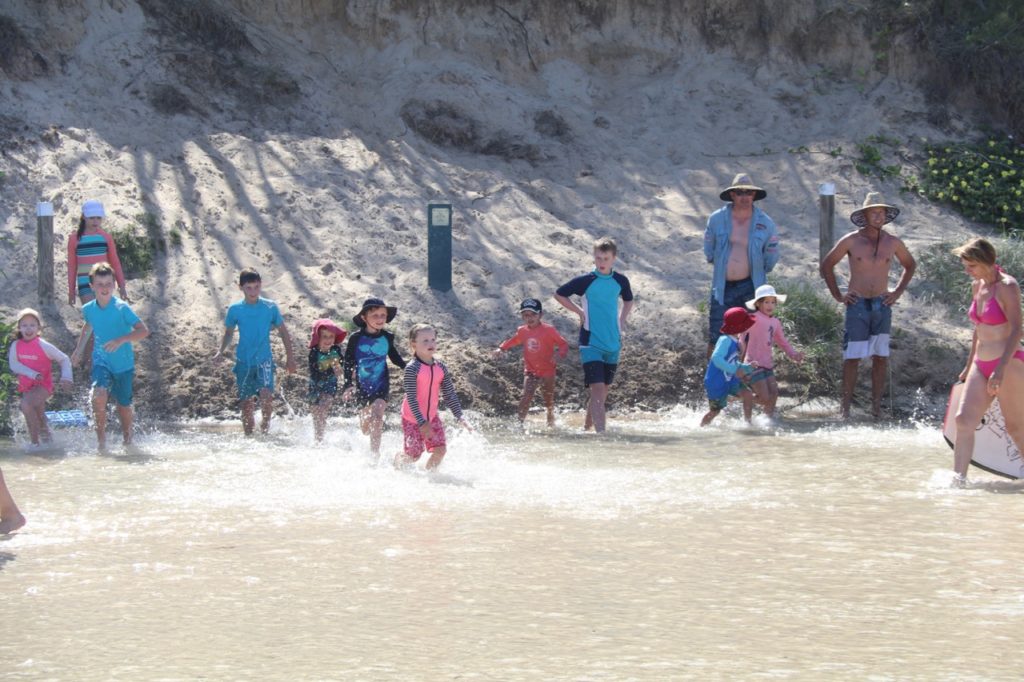
It was then time to head back to our camp. We had spaghetti bolognese for tea tonight, followed by bananas with melted chocolate and toasted marshmallows. We had settled into our camping now with everyone having their allotted jobs.
Day three dawned early and it was time to take down our tents and pack up for the return trip. We had decided to visit Lake Wabby today, another freshwater lake relatively close to the ocean side of Fraser Island. It is both a window lake and a barrage lake. Window lakes form when the ground level falls below the water table. Barrage lakes form when a sand blow blocks the waters of a natural spring. This phenomenon is easy to see at Lake Wabby. On one side its deep green waters are bordered by a giant sand dune that is slowly moving into the lake. In a century or so, the sand dune’s inexorable march westward across Fraser Island will see it completely swallow the lake.
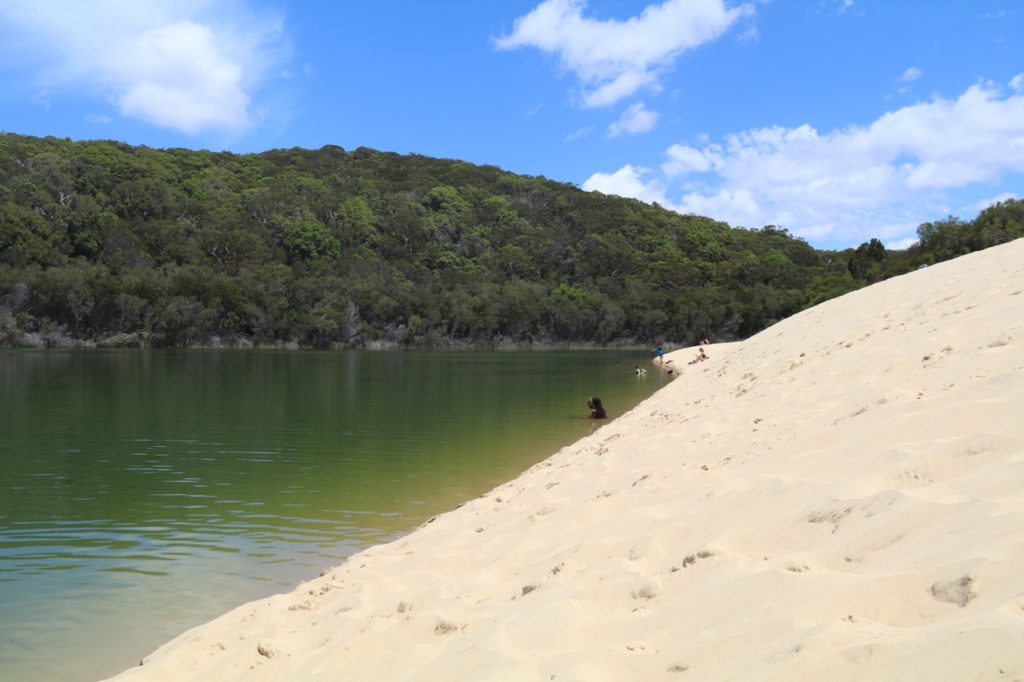
The walk from the beach to Lake Wabby is about 4.5 kilometres and takes about 50 minutes each way. You are very glad of the lake for a dip by the time you get there! Be sure to take plenty of water as it is a hot sweaty walk. The spectacle of Lake Wabby and the encroaching sand dunes is well worth the walk.
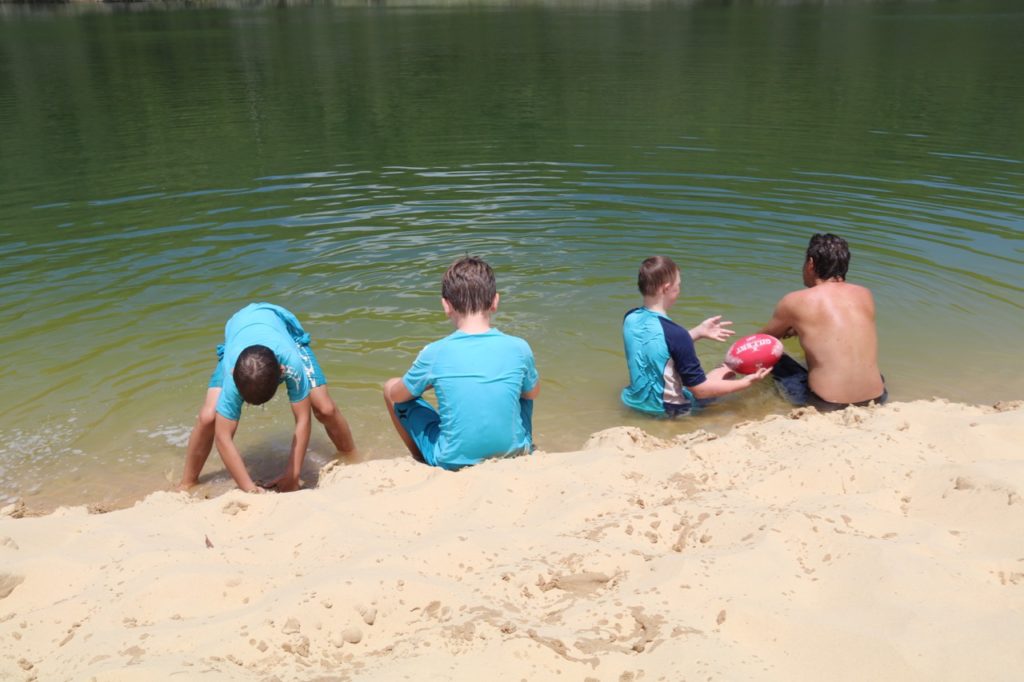
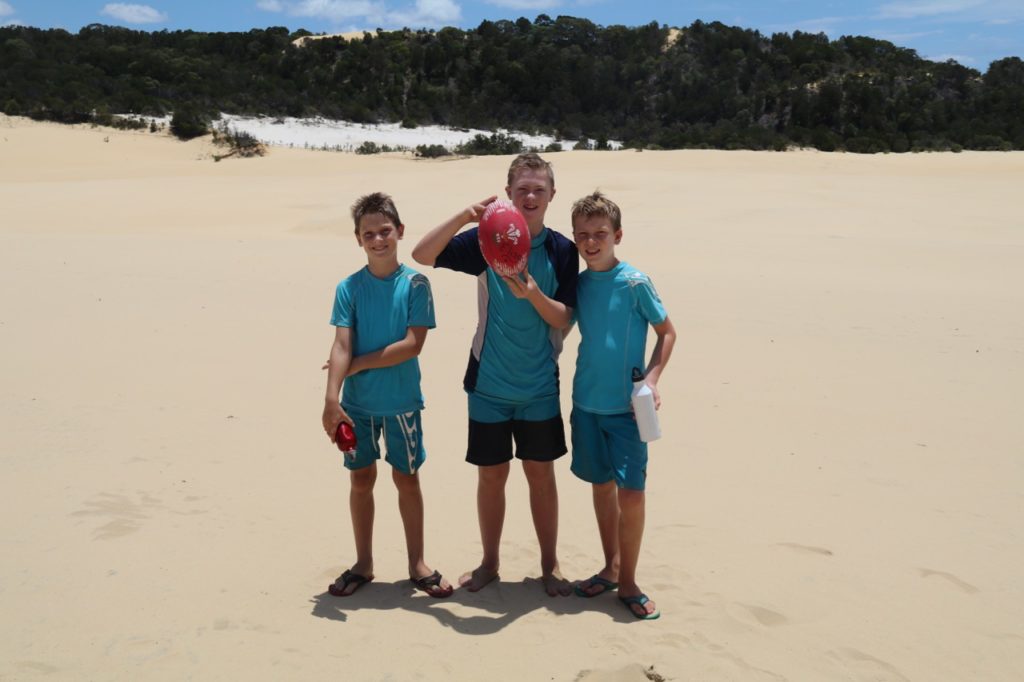
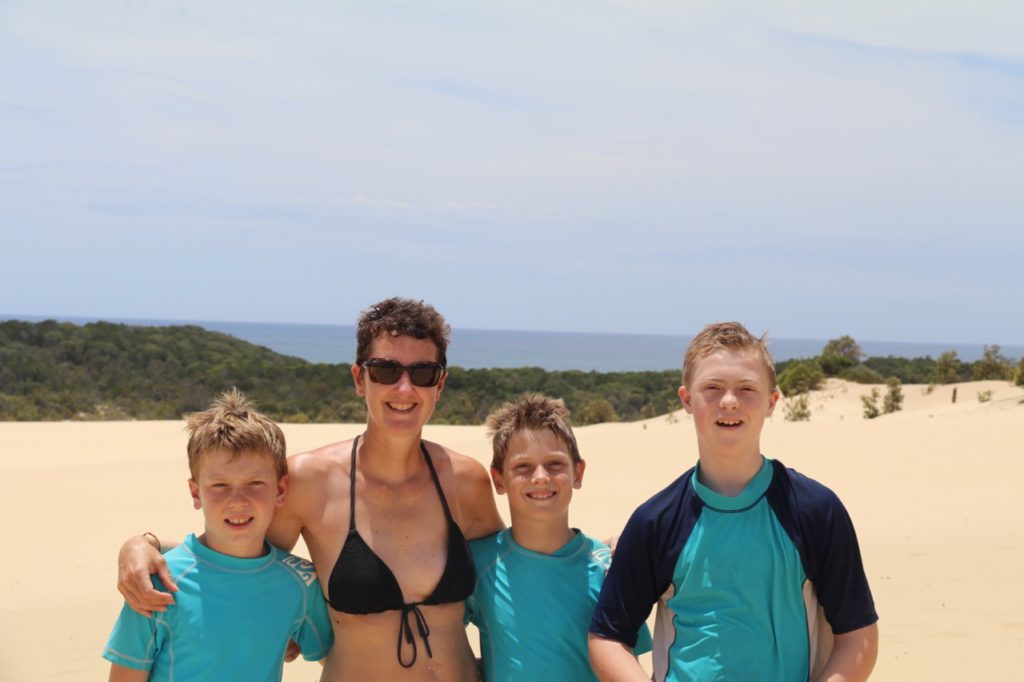
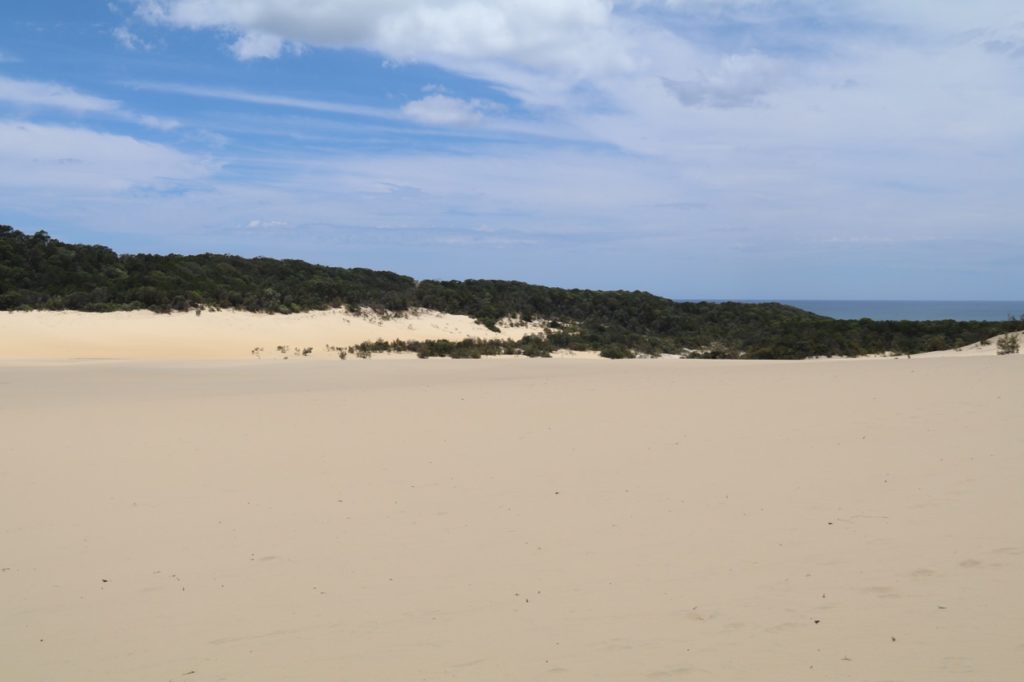
From here we enjoyed another picnic lunch before heading back across the island to catch the ferry back to the mainland.
In our “vintage” Landcover 110 we were able to get to everywhere we wanted to on the island. Albeit at a much slower pace than most other vehicles. We are very experienced sand drivers (after living in the middle east) and so enjoyed the “old school” challenge of navigating a Land Rover 110 around, windows down, nursing the gears, feeling every bump on the track. It is however a totally different, aka more difficult, experience to driving in sand with the comfort, power, and handling of modern vehicles (Land Cruiser, Nissan Patrol, Discovery 3 or 4). Novice sand drivers should consider this when planning their trip.
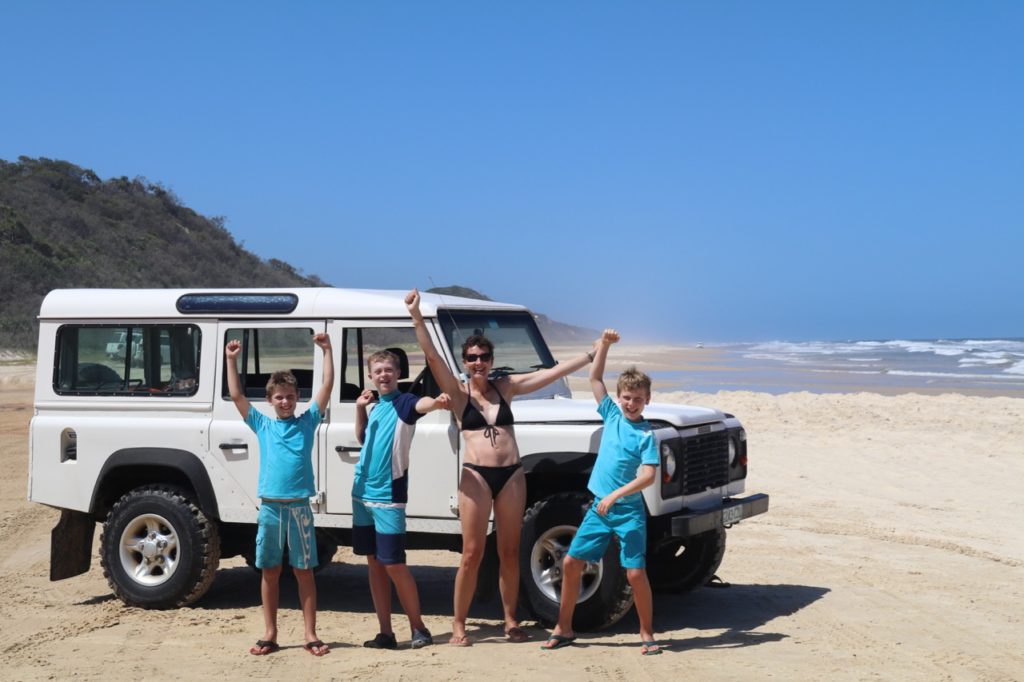
HOW TO VISIT FRASER ISLAND
The only way to explore Fraser Island is with a 4WD. There are three main ways to visit Fraser Island: tag-along tours, organised tours or 4WD hire. Tag-along tours are popular with backpackers, where groups of travellers pile into a 4WD convoy and follow a lead vehicle with an experienced driver/guide. Organised tours cover the island’s hotspots and tend to be on large 4WD buses. 4WD vehicles can be hired and give complete freedom to roam the island and escape the crowds. We chose the later option hiring a 4WD from Hervey Bay, from the company Fraser Magic 4WD. They only hire Land Rovers, either the Discovery 2 or the Land Rover 110, both older style vehicles. This gave us the freedom to do what we wanted as a family group.
WHERE WE STAYED
We stayed for two nights at Dundubara Campsite on Fraser Island, a fenced camp towards the north of the island. This had been recommended to us due to the very real threat of dingoes on the island, particularly with children. The campsite had several well spaced tent pitches, all with picnic table, as well as communal toilets, showers and BBQ’s.
The night before our trip we stayed at the Colonial Lodge in Hervey Bay, where we had a spotlessly clean, spacious two bed apartment complete with kitchen.


